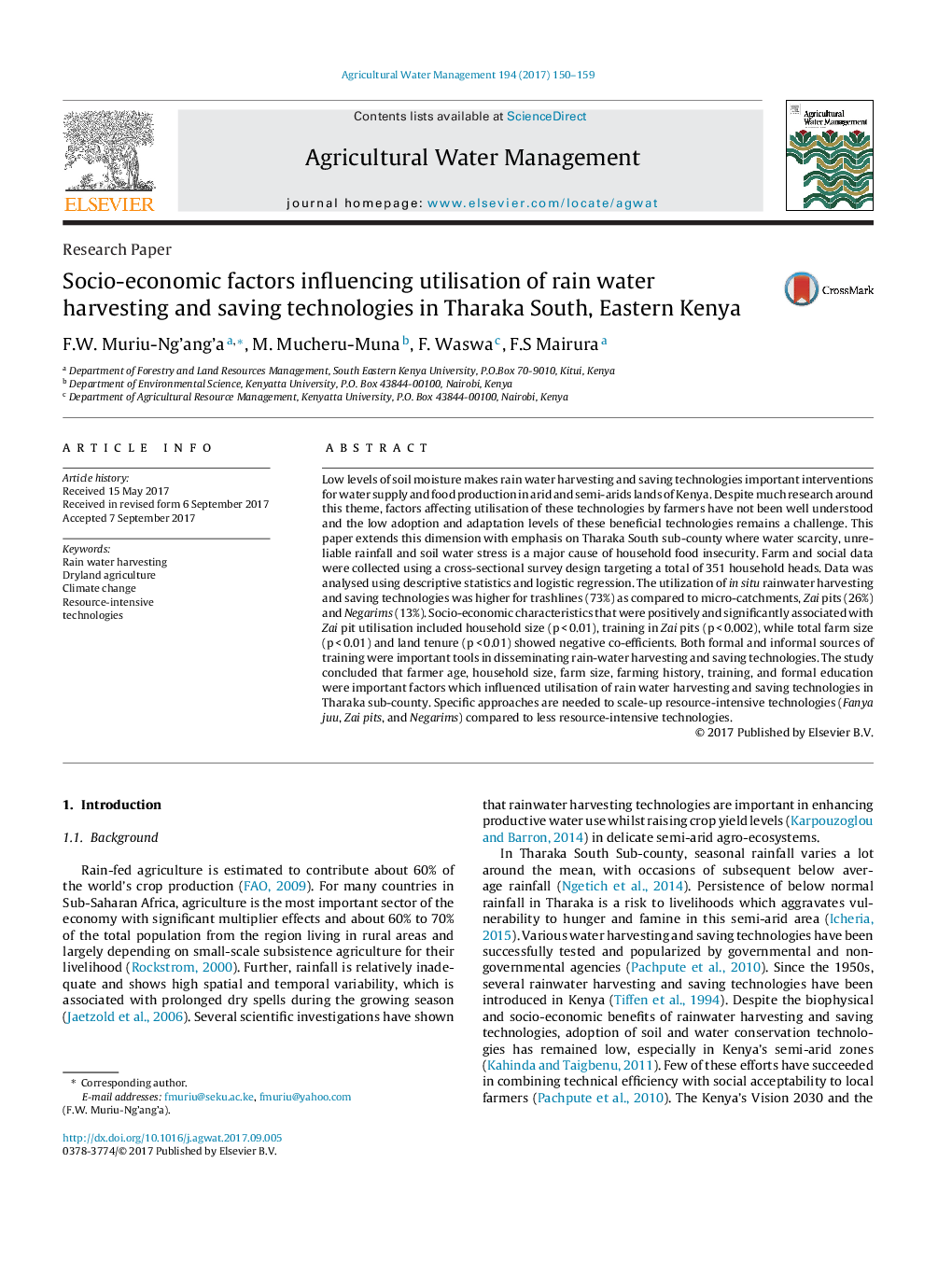| Article ID | Journal | Published Year | Pages | File Type |
|---|---|---|---|---|
| 5758476 | Agricultural Water Management | 2017 | 10 Pages |
Abstract
Low levels of soil moisture makes rain water harvesting and saving technologies important interventions for water supply and food production in arid and semi-arids lands of Kenya. Despite much research around this theme, factors affecting utilisation of these technologies by farmers have not been well understood and the low adoption and adaptation levels of these beneficial technologies remains a challenge. This paper extends this dimension with emphasis on Tharaka South sub-county where water scarcity, unreliable rainfall and soil water stress is a major cause of household food insecurity. Farm and social data were collected using a cross-sectional survey design targeting a total of 351 household heads. Data was analysed using descriptive statistics and logistic regression. The utilization of in situ rainwater harvesting and saving technologies was higher for trashlines (73%) as compared to micro-catchments, Zai pits (26%) and Negarims (13%). Socio-economic characteristics that were positively and significantly associated with Zai pit utilisation included household size (p < 0.01), training in Zai pits (p < 0.002), while total farm size (p < 0.01) and land tenure (p < 0.01) showed negative co-efficients. Both formal and informal sources of training were important tools in disseminating rain-water harvesting and saving technologies. The study concluded that farmer age, household size, farm size, farming history, training, and formal education were important factors which influenced utilisation of rain water harvesting and saving technologies in Tharaka sub-county. Specific approaches are needed to scale-up resource-intensive technologies (Fanya juu, Zai pits, and Negarims) compared to less resource-intensive technologies.
Related Topics
Life Sciences
Agricultural and Biological Sciences
Agronomy and Crop Science
Authors
F.W. Muriu-Ng'ang'a, M. Mucheru-Muna, F. Waswa, F.S Mairura,
